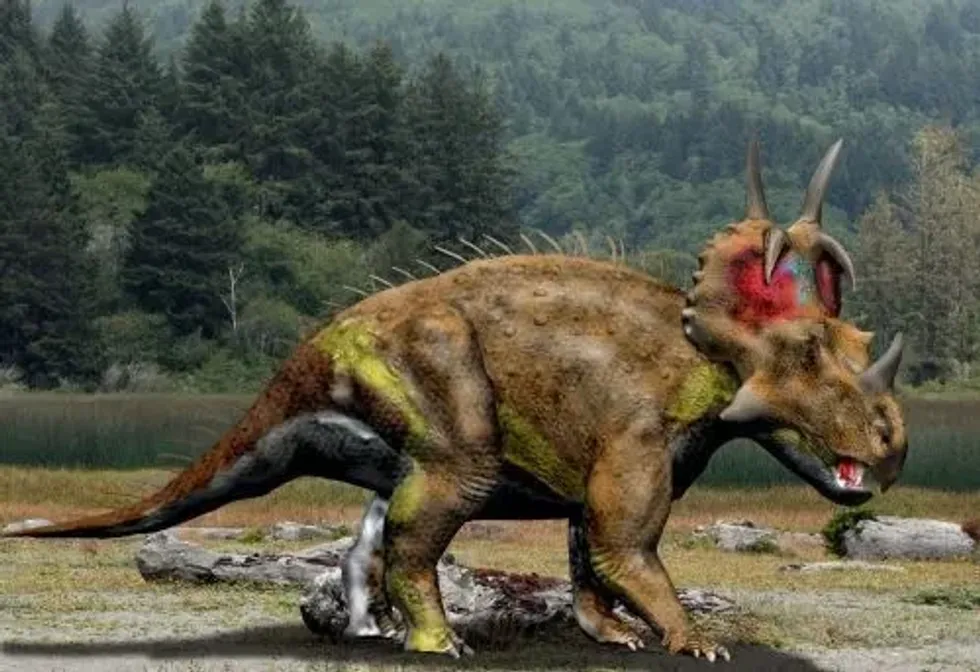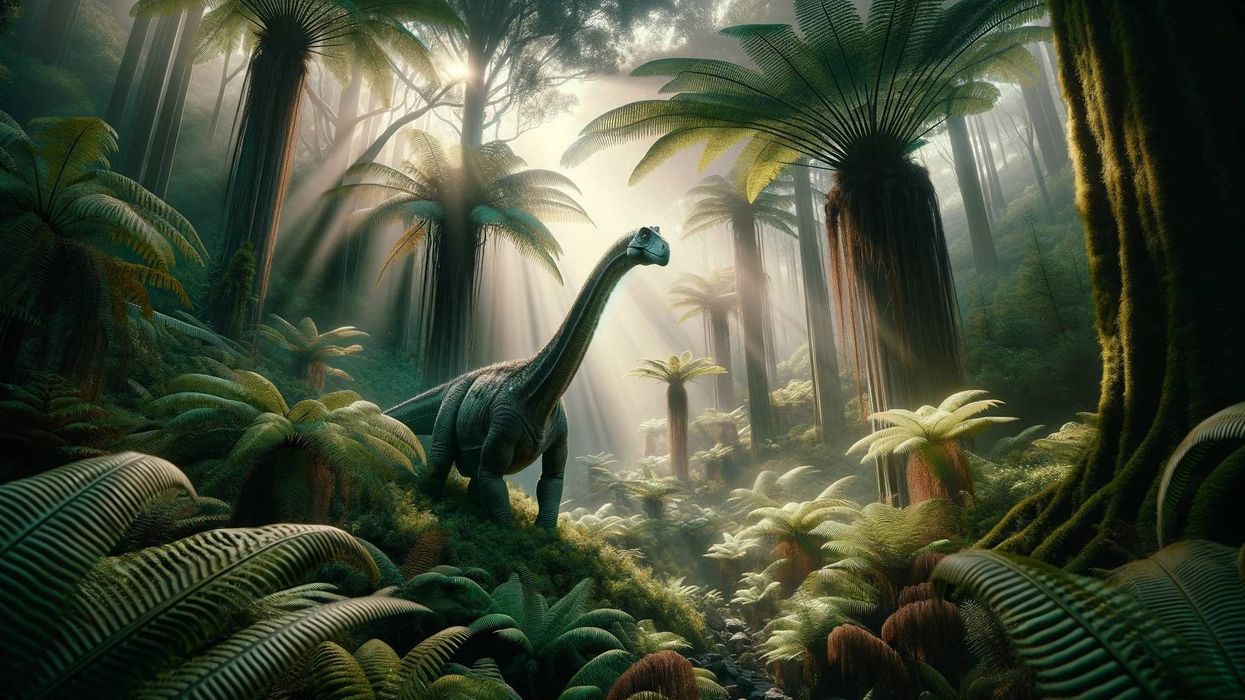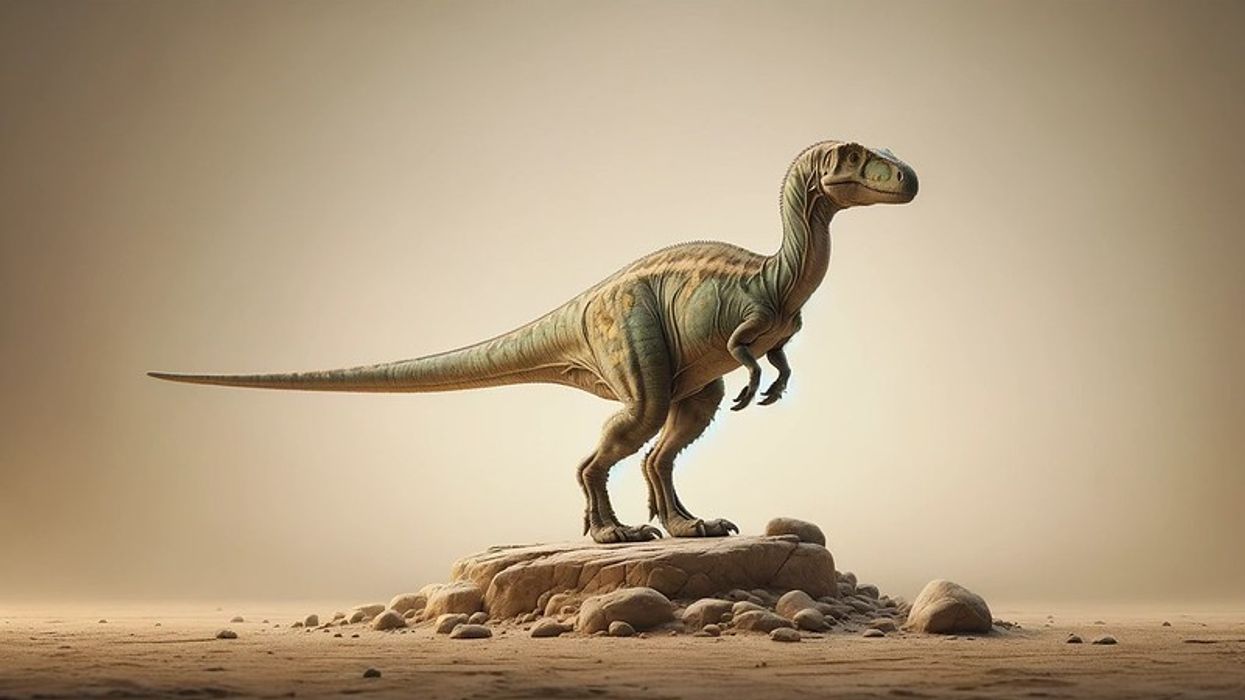Centrosaurine ceratopsian, Spinops, is from a genus that is extinct in southern Canada from the Late Cretaceous period. According to the fossil representation, two partial skulls were found.
The spikes were different from other horned species.
The only record of Spinops is its holotype NHMUK R16307, which is part of the midline bar of a parietal bone. An incomplete Spinops skull was preserved in NHMUK R16304, a partial parietal bone in NHMUK R16305, and squamosal bones from the right in NHMUK R16309.
The material was discovered in the northwest section of Dinosaur Provincial Park (Steveville Badlands) but did not match earlier articulations. Levi Sternberg, son of fossil collector Charles Hazelius Sternberg, found two partial Spinops sternbergorum skulls near southern Alberta, at the mouth of the Red Deer River in 1916, along with the skull mutilations.
In 1991, London's Natural History Museum, earlier known as the British Museum of Natural History, funded the expedition. The museum determined that the fragmentary fossils could not be displayed.
Arthur Smith Woodward (paleontology expert) told Charles H. Sternberg that the Spinops fossils were useless.
A lack of field records makes it difficult to locate the bonebed, but Darren Tanke of the Royal Tyrrell Museum is doing whatever he can to locate it. Researchers, led by Paul M. Barrett, Michael J. Ryan, Mark A. Loewen, Dr. Andrew, and A. Farke, reexamined the fossils in 2011 and discovered they represent a totally new species.
If you liked reading about Spinops, you might also like Austroraptor and Homalocephale.
Spinops Interesting Facts
How do you pronounce 'Spinops'?
Named for its distinctive ornamentation, spina and ops mean spine and face, respectively in Greek and Latin. In honor of Charles H. and Levi Sternberg, the specific name has been adopted. It is pronounced 'spin-ops'.
What type of dinosaur was a Spinops?
From the Late Cretaceous period, Spinops was a genus of centrosaurine ceratopsian dinosaurs.
In which geological period did the Spinops roam the earth?
Spinops are believed to have existed in the Cretaceous period.
When did the Spinops become extinct?
In the Cretaceous Period, about 65 million years ago, the dinosaurs became extinct after about 165 million years on Earth.
Where did a Spinops live?
They used to live in what is now North America in places like Canada, Alberta, and Red Deer River.
What was a Spinops's habitat?
Fossils were found in sandstones. This led scientists to believe that they used to live in deserts near the edgeway.
Who did a Spinops live with?
According to previous research, the spikes only evolved once in the group. A careful examination of Spinops, however, reveals that its spikes are positioned differently than those seen in most other horned dinosaurs, suggesting that the structures evolved separately.
How long did a Spinops live?
The Spinops lived between 83.5-70.6 million years ago (Campanian stage).
How did they reproduce?
Centrosaurines didn't reach full maturity until nearly fully grown before they could show full mating signals. Sampson finds a correlation between the long adolescence of animals with social structures ranked by age and the slow growth of mating signals in centrosaurines.
The young males of these groups typically reach sexual maturity several years before they begin to breed when their mating signals are at their peak. Adolescence is shorter for females than it is for males.
Spinops Fun Facts
What did a Spinops look like?

The massive bodies of Spinops were borne by stocky limbs, although at up to 18 ft (5.5 m) they were not particularly large dinosaurs. Spinops possessed a single large horn over its nose, like other centrosaurines.
According to the specimen, these horns curve forward or backward. Older animals had less ornamentation on their skulls.
In older and larger adults, the frill could reach a length of over half a meter compared to the skull length.
Their horns hook forward and over the frill, which is the distinguishing feature. Also found over the eyes is a pair of small upwardly pointing horns.
The frills of this dinosaur were moderately long, and there were small horns on the outer edges of the fenestrae. These research materials were probably collected from the upper part of the Oldman Formation, dating to the Campanian stage of the Late Cretaceous period, or less likely from the lower part of the Dinosaur Park Formation.
How many bones did a Spinops have?
It was Charles Hazelius Sternberg, a fossil material collector whose son Levi discovered the skull mutilations near the Red Deer River of southern Alberta in 1916, along with two partial skulls of Spinops. After the expedition was financed by the Natural History Museum in London (British Museum of Natural History), the fossils were sent there.
Due to the fragmentary nature of the fossils, the museum decided they would not be prepared for display.
It is unknown exactly where the bonebed is because field records have been poor, but Darren Tanke of the Royal Tyrrell Museum is doing whatever he can to relocate it.
Researchers led by Dr. Andrew A. Farke reexamined the fossil material in 2011 and realized that they represented this as a totally new dinosaur species. Exactly how many bones a Spinops had is unknown.
How did they communicate?
Vocal and visual communication was probably common in dinosaurs. There are some dinosaurs that had chambered headrests that could amplify their grunts or bellows, such as the Corythosaurus and the Parasaurolophus. Vocal, as well as visual displays, were probably used in defensive behavior, courtship, and territory disputes.
How big was a Spinops?
Centrosaurines are relatively small compared to their sister group, Chasmosaurinae. Its skull was estimated to measure 5.9 ft (1.8 m) in length in the primitive Sinoceratops zhuchengensis. As a result, Albertoceratops had a longer skull than the average member of this group at 26.4 in (67 cm). A Centrosaur measured about the size of a rhinoceros.
How fast could a Spinops move?
Perhaps it was a good runner since it was capable of speeds up to 20 mph (32.2 kph). Spinops are distinguished by being larger than most other ceratopsians and having a curved nose rather than a backward curve.
How much did a Spinops weigh?
Their exact weight is unknown, but with a skull measuring 5.9 ft (1.8 m) in length, it is to be assumed that they were enormous and weighed a huge amount!
What were the male and female names of the species?
There are no sex-specific names given to Spinops.
What would you call a baby Spinops?
A baby Spinops is called a hatchling.
What did they eat?
The diet of Spinops includes low-lying plants as they were herbivores. They did not hunt or prey on other animals, even in packs.
How aggressive were they?
No such reports or findings have come to the surface that suggests they were aggressive.
Did you know...
Just like their name, they were easily recognizable from their spikes.
Due to their lack of sophistication, the fossils were rejected for exhibit and subsequently shelved for decades. Until paleontologists recognized the fossil's importance in 2011, the bones were not cleaned for study.
How did the Spinops get its name?
The nomenclature of Spinops was initially done by Mark A. Loewen, Andrew A. Farke, Dennis R. Braman, Michael J. Ryan, Paul M. Barrett, Darren H. Tanke, and Mark R. Graham in 2011. The type species is Spinops sternbergorum.
The name is derived from the Greek and Latin words spina and ops, Spinops name meaning spine and face, in reference to its distinctive look.
The specific name is in honor of Charles H. Sternberg and Levi Sternberg. It is 'a new centrosaurine from the Late Cretaceous of Alberta, Canada, and the evolution of parietal classification in horned dinosaurs', according to Acta Palaeontologica Polonica, a science journal.
What terrain did the Spinops live in?
There was a lot of movement and change during the Late Cretaceous period. Located on a coastal plain, this area has a temperate climate and a warm climate.
A wide variety of fish, turtles, and crocodiles could be found in rivers lined with cypress trees. Small mammals, like squirrels and possums, found food and shelter in the forests of sycamore and magnolia along with ferns and mosses. The warm waters of the Bearpaw Sea are home to a great variety of invertebrates, sharks, and marine reptiles.
It was a time when dinosaurs ruled the land. There were more than 40 species found here, adding to 450 other fossil organisms found elsewhere.
Here at Kidadl, we have carefully created lots of interesting family-friendly dinosaur facts for everyone to discover! Learn more about some other creatures from our Zuniceratops facts, or Puertasaurus facts for kids.
You can even occupy yourself at home by coloring in one of our free printable Spinops coloring pages.
Main image by Nobu Tamura.
Second image by Nobu Tamura.









